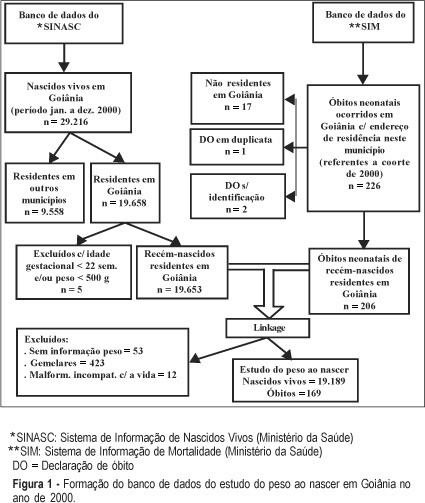Revista Brasileira de Ginecologia e Obstetrícia. 2005;27(3):130-136

PURPOSE: to analyze birth weight in a cohort of newborns for the year 2000, in Goiânia, by determining the coefficient of mortality and neonatal survival probability, stratified by categories of birth weight, and also, through the identification of factors associated with low birth weight (LBW). METHODS: a retrospective cohort study, made possible by the linkage of data from the ISM (Information System on Mortality) and ISLB (Information System on Live Births) files. Coefficients of neonatal mortality were calculated for the categories of birth weight and a neonatal survival probability chart was constructed with the help of linear regression analysis. Risk factors for LBW were identified by univariate analysis (RR) and logistic regression analysis, and the level of significance was set at 5%. RESULTS: the incidence of LBW was 6.9% and 140 (66.8%) neonatal deaths took place in this group. Thirty percent of these deaths occurred in the 1,500-2,500 g weight bracket. The following risk factors were identified for LBW: preterm pregnancy, presence of congenital malformations, mothers at the extreme ages for reproduction, mothers living in the northwestern region of the city, insufficient prenatal appointments with the doctor, delivery in a public hospital, and female babies. CONCLUSION: Goiânia had an incidence of LBW which is comparable to that of developed countries and coefficients of neonatal mortality by category of weight were below those found for those countries. These results recommend that we pay attention to: prematurity, public hospitals, and the northwestern region of Goiânia.
Search
Search in:


Comments